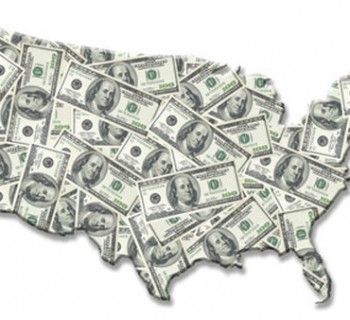If you have watched home design networks such as HGTV or DIY recently, you may have noticed the outrageously large number of house flipping shows. Flip or Flop, Flip this house, Masters of Flip, Flipping Out, Beach Flip – even Vanilla Ice has a house flipping show and successful business. While it appears that everyone is making money flipping houses, the question that often arises is – does house flipping result in profits like those seen on the major networks? Before stepping into the house flipping game, it is important to have a clear understanding of the process, opportunities and risks in today’s market.
Today’s Market
Sure, the concept of buying a home on the cheap, renovating it and making a quick profit seems easy. However, the real estate market has been heating up on both the local and national level and data suggests that house flipping activity is near pre-2008 recession numbers. In fact, the nation’s largest multi-sourced property database ATTOM Data Solutions notes that 53,638 single family homes and condos were flipped nationwide during the second quarter of 2017, representing an overall home flipping rate of 5.6 percent. While house flipping activity has been strong, a combination of low inventory, increased demand and shrinking distressed sales have all contributed toward a transition from a “buyer’s market” to a “seller’s market”. In fact, high demand from all buyers has led to an increase in the median existing-home price for all housing types in August to $253,500, up 5.6 percent from the previous year and marks the 66th straight month of year-over-year gains.
As you can imagine, higher prices and increased competition for properties can create a drag on profitability. While ATTOM data suggests that house flipping profit is down from a high reached in the third quarter 2016, the report suggest that the average gross flipping profit was still $67,516 for properties flipped in the second quarter of this year.
According to Daren Blomquist, senior vice president at ATTOM Data Solutions, “Home flippers are employing a number of strategies to give them an edge in the increasingly competitive environment where flipping yields are being compressed. Many flippers are gravitating toward lower-priced areas where discounted purchases are more readily available — often due to foreclosure or some other type of distress.” The challenge for many investors is that the number of foreclosures and short sales have diminished greatly in many markets. “In markets where distressed discounts have largely dried up, flippers are showing more willingness to leverage financing when acquiring properties, often purchasing closer to full market value and then relying more heavily on price appreciation to fuel their flipping profits,” Blomquist added. Interestingly, states with the highest share of Q2 2017 home flips purchased as foreclosures were Indiana (61.1 percent), New Jersey (60.0 percent), Maryland (59.4 percent), Illinois (52.7 percent), and Ohio (52.3 percent).
Reality vs TV
House flipping programs tend to glamorize the process of house flipping by accentuating the profits that can be made. As a result, there are some very important factors that can influence house flipping success. First, there is a difference between the gross profit and net profit. Gross figures that are highlighted on shows like Flip or Flop ignore two critical components – carrying costs and taxes. Carrying costs are the expenses associated with the property until it is sold and they can really add up quickly. For example, financing costs, real estate taxes, insurance and other carrying costs create a negative drag on profits and are often partially overlooked by investors. Remember, the longer your money is tied up in the property, the higher the carrying costs will generally be.
After getting a handle on carrying costs, it is important to understand the impact of taxes. Since house flippers generally target purchasing, renovating and selling a property in less than one year, any gains will be taxed as short-term capital gains – generally at the unfavorably high ordinary income tax rates. For example, if you are in the 28% marginal bracket and make a $50,000 profit, you may need to pay capital gains taxes on both the state and federal level, resulting in a net profit of closer to $32,000. When determining whether to move forward with a purchase it is always critical to use net profit rather than gross profit.
Getting your number right
House flippers must also be very careful with their assumptions. Too often, investors underestimate renovation costs and overestimate future sale prices resulting in realizing significantly less profit (or maybe even a loss). Instead, be sure to consider worst case scenarios for renovation expenses and sale prices. Remember, while it is certainly a sellers’ market, each market is different and it is important to work with a real estate professional, accountant and attorney to help determine your projected sale price, tax impacts and a review of contracts respectively. While house flipping can be profitable, it is not appropriate for all investors and it is important to understand the difference between the Vanilla Ice Project and real life.










